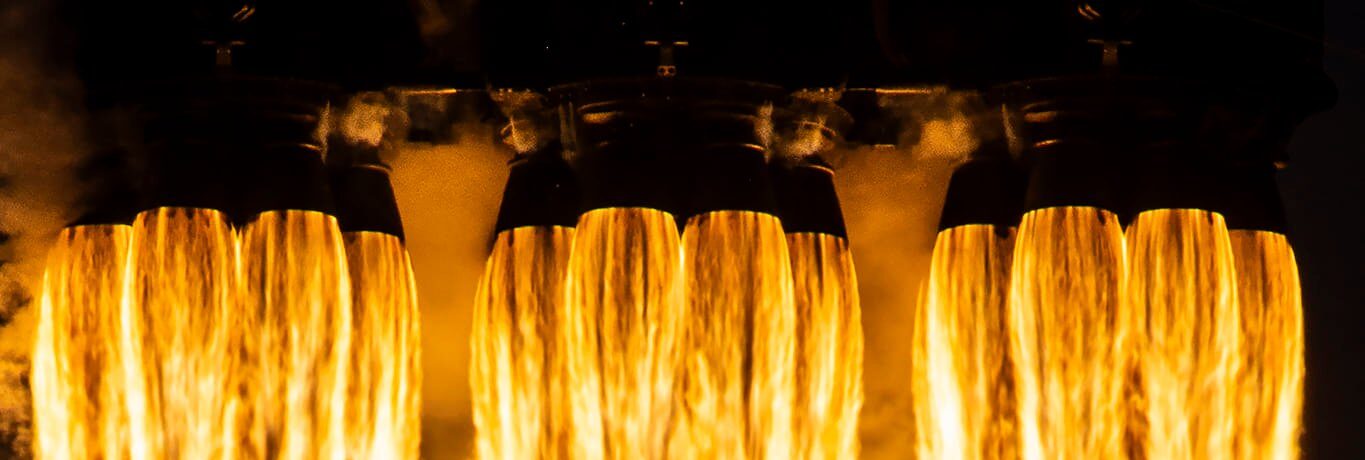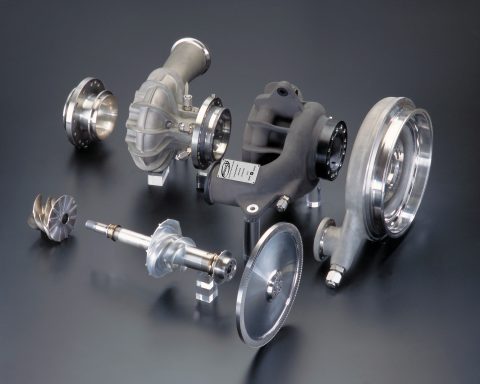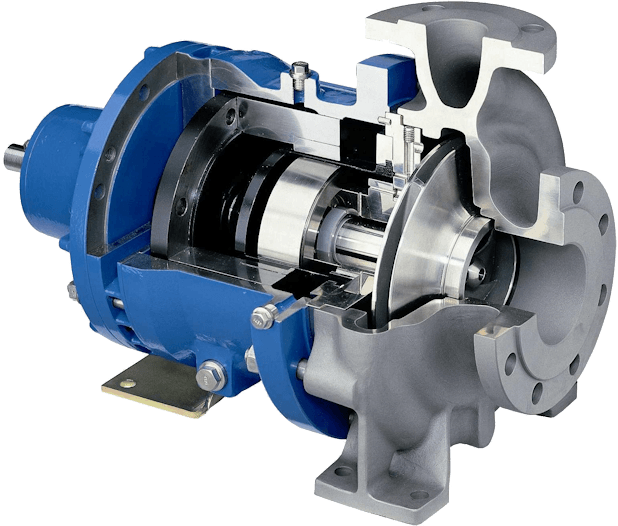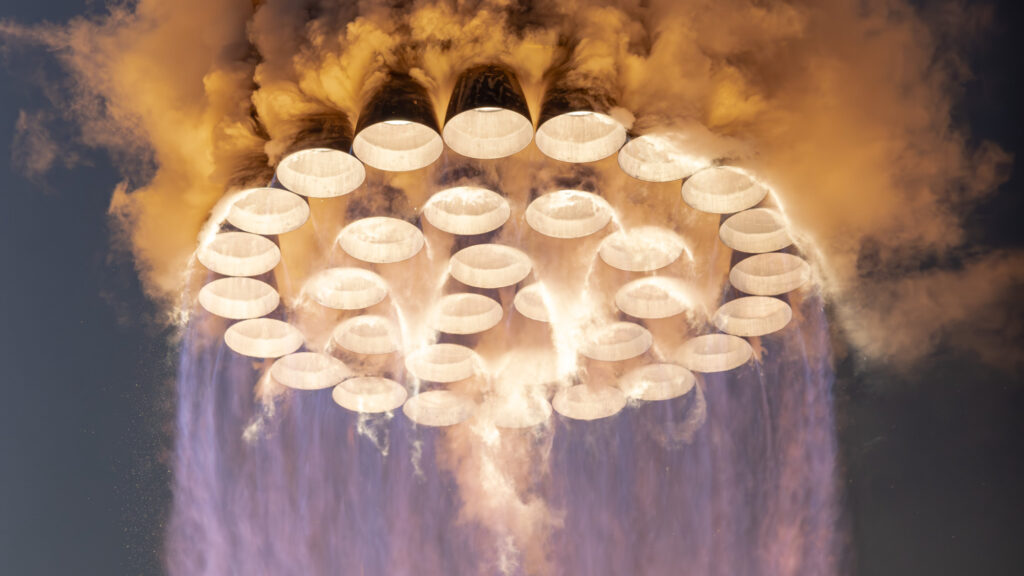Labyrinth seals for high-speed rotating equipment are essential to the reliability of today’s wind turbines. These systems face extreme conditions, including high rotational speeds and fluctuating loads, as well as airborne contaminants, which can quickly compromise traditional contact seals.
In critical interfaces, such as gearboxes and generator shafts, seal failure often results in lubricant loss, contamination, and costly downtime. Labyrinth seals address these issues with a non-contact design that forms a tortuous path to block ingress and retain lubrication without generating friction, heat, or wear.
For wind energy applications, where uptime and longevity are non-negotiable, polymer labyrinth seals offer additional advantages, including corrosion resistance and lightweight design. In this blog post we discuss how labyrinth seals meet the demanding requirements of high-speed rotating systems in modern wind turbines.
Sealing Demands in Wind Turbines
Wind turbines are unique machines. They operate in harsh environments from salty offshore platforms to dust-laden plains and must run continuously for years with limited access to maintenance. At the heart of these systems lie high-speed rotating components, including the gearbox output shaft, the generator interface, and, in some direct-drive designs, high-speed rotor hubs.
These components rotate at thousands of revolutions per minute. They are subjected to wide-ranging temperatures, frequent load reversals, and axial or radial misalignment caused by structural flexing. Worse, they must do all this while preventing the ingress of moisture, dirt, and particles that degrade internal components.
Traditional contact seals struggle here. Frictional heat accelerates wear. Surfaces degrade. And eventually, lubricant escapes, or contaminants enter, leading to bearing failure or gearbox damage. The cost of even one unplanned maintenance event can be staggering. Sealing solutions must offer more than just barrier performance: they need to support longevity, stability, and efficiency under continuous high-speed operation.
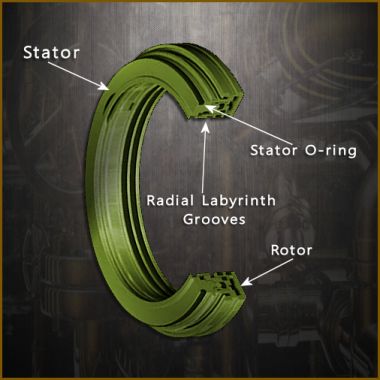
How Labyrinth Seals Work in High-Speed Wind Energy Applications
The power of a labyrinth seal lies in its geometry. Instead of using contact pressure to form a barrier, it creates a complex, narrow passage through which air, oil, or particles must travel. Each directional change or constriction in the path dissipates pressure and reduces the flow’s momentum. By the time the fluid or gas reaches the other end—if it ever does—its energy is largely lost.
This design is ideal for high-speed rotating equipment. No physical contact means no friction. No friction means no heat generation or surface wear. The result is a sealing system that performs reliably over extended periods, particularly in dynamic, high-load environments such as wind turbines.
Modern labyrinth seals may include straight-through paths, stepped grooves, or interlocking designs. Some systems incorporate shallow grooves on the shaft and mating grooves on the stationary housing, creating a highly restricted channel without touching components.
In wind turbines, materials also matter. Polymer labyrinth seals offer significant advantages over metal or elastomeric solutions for wind energy applications. Polymers such as PTFE, PEEK, and UHMW-PE resist corrosion, weigh less, and are less abrasive to surrounding components. These qualities make polymer labyrinth seals well-suited for outdoor and marine turbine installations, where exposure to salt spray, moisture, and UV radiation can cause degradation of metal components over time.

Technical Advantages of Labyrinth Seals for Wind Energy Equipment
For design engineers and maintenance professionals, the benefits of labyrinth seals in high-speed wind turbine equipment go beyond just sealing. Here’s how they add real-world value:
1. Wear-Free Operation
Since labyrinth seals rely on flow dynamics and not frictional contact, they do not degrade from continuous rotation. This eliminates a primary failure mode in conventional seals—surface wear—and extends operational life.
2. Superior Thermal Behavior
High-speed shafts generate heat, particularly during periods of high power output. Traditional seals may harden, melt, or lose tension when exposed to heat. Labyrinth seals are immune to these issues. Their non-contact nature means virtually no temperature rise due to sealing friction.
3. Resistance to Misalignment
Wind turbines experience tower sway, yaw misalignment, and thermal expansion. Labyrinth seals are more tolerant of these shifts than rigid-contact seals. The sealing gap may vary slightly, but performance remains largely unaffected.
4. Low Torque Drag
Especially at startup or low-speed conditions, reducing system resistance is key. Labyrinth seals exert no drag torque, allowing for more efficient rotation and reduced energy loss. Over time, this contributes to better system efficiency and lower mechanical loading.
5. Contaminant Rejection
Particles, moisture, and even insects are a constant threat to wind turbine internals. Labyrinth seals, with their tortuous flow path, effectively reject solid contaminants, particularly when paired with centrifugal motion or positive internal pressure.
6. Maintenance Reduction
Perhaps the most significant benefit: reduced service frequency. For remote or offshore turbines, extending service intervals by even a few months can translate into substantial savings in crew time, transportation, and lost production.
Conclusion & Engineering Recommendations
Labyrinth seals for high-speed rotating equipment have proven themselves in gas turbines, aircraft engines, and now increasingly in wind turbines, where high-speed rotation and long-term reliability are essential. Their non-contact geometry makes them uniquely suited for systems that must endure thousands of hours of continuous operation with minimal maintenance.
In wind energy, where environmental exposure, mechanical stress, and economic pressure converge, polymer labyrinth seals offer a compelling balance of performance, durability, and design flexibility. They protect critical systems without the drawbacks of traditional friction-based seals.
For engineers seeking to extend component life, improve drivetrain reliability, or reduce long-term maintenance costs, labyrinth seals—especially those built from advanced polymers—deserve serious consideration. Whether you’re designing next-generation turbines or retrofitting legacy systems, Advanced EMC can help develop custom labyrinth sealing solutions that meet your exact performance requirements.


